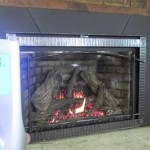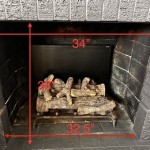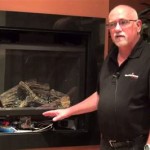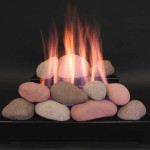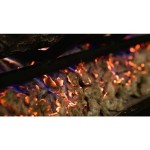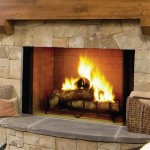Brick Panels For Fireplace Insert: A Comprehensive Guide
Fireplace inserts offer an efficient and aesthetically pleasing method for upgrading an existing fireplace. These self-contained heating units are designed to slide into an existing fireplace opening, increasing heating efficiency and providing a controlled burn. While the insert itself provides the primary heating functionality, the surrounding firebox significantly impacts the overall appearance and performance. Brick panels are a popular choice for lining the firebox of a fireplace insert, offering a combination of aesthetic appeal, fire resistance, and heat retention properties.
The selection of appropriate brick panels is crucial for both the look and functionality of the fireplace insert. These panels serve not just as decorative elements, but also contribute to the overall safety and efficiency of the heating appliance. Understanding the various types of brick panels available, their benefits, and the installation process is essential for homeowners looking to enhance their fireplace insert.
Types of Brick Panels and Their Characteristics
Several types of brick panels are available for fireplace insert applications, each with distinct characteristics affecting cost, appearance, and performance. Refractory brick is arguably the most common type. Composed of heat-resistant materials like fireclay and alumina, refractory bricks are designed to withstand extremely high temperatures without cracking or deteriorating. This makes them ideal for direct contact with the flames within the firebox. They also have excellent heat retention properties, meaning they absorb and radiate heat even after the fire has died down, increasing the overall efficiency of the fireplace insert.
Another type of brick panel is manufactured brick veneer. This option mimics the appearance of real brick but is typically thinner and lighter. While not as heat-resistant as refractory brick, manufactured brick veneer can still provide adequate fire protection when used in conjunction with a properly installed fireplace insert. These panels are often more affordable than refractory brick and offer a wider range of colors, textures, and patterns, allowing for greater design flexibility. However, it's paramount to select a manufactured brick veneer specifically rated for fireplace applications, ensuring it can withstand the elevated temperatures present within the firebox.
Porcelain tile, also sometimes used as a brick panel alternative, offers a modern and sleek look. Porcelain is a highly durable and water-resistant material, making it easy to clean and maintain. While not a traditional "brick," some porcelain tiles are designed to resemble brick in appearance. Similar to manufactured brick veneer, it is critical to choose porcelain tiles rated for high-temperature applications when using them in a fireplace insert. Consider that porcelain typically does not retain heat as effectively as refractory brick.
Benefits of Using Brick Panels in a Fireplace Insert
Using brick panels within a fireplace insert offers several advantages beyond pure aesthetics. First, brick panels significantly improve the thermal efficiency of the fireplace insert. Refractory brick, in particular, absorbs heat from the fire and radiates it back into the room, creating a more consistent and comfortable heating experience. This added thermal mass helps to maintain a warmer temperature for a longer period, reducing the need to constantly feed the fire.
Second, brick panels provide a crucial layer of fire protection. By lining the firebox with fire-resistant materials, the panels help to prevent the spread of fire to surrounding walls or materials. This is especially important in older homes where the existing fireplace may not meet modern safety standards. The fire resistance of brick panels contributes to a safer and more secure heating environment.
Third, brick panels can dramatically enhance the aesthetic appeal of a fireplace insert. Available in a variety of colors, textures, and patterns, brick panels allow homeowners to customize the look of their fireplace to match their existing décor. Whether opting for a classic red brick look or a more modern and contemporary style, brick panels offer a wide range of design possibilities. This customization allows the fireplace insert to seamlessly integrate into the room and become a focal point of the living space.
Installation Considerations for Brick Panels
Proper installation of brick panels is essential for ensuring both the safety and longevity of the fireplace insert. The installation process typically involves preparing the existing firebox, applying a heat-resistant adhesive or mortar, and carefully positioning the brick panels to create a uniform and visually appealing surface. It's crucial to follow the manufacturer's instructions for both the fireplace insert and the brick panels to ensure a correct and safe installation.
Preparation is key to a successful installation. The existing firebox should be thoroughly cleaned to remove any loose debris, soot, or previous lining materials. Repair any cracks or damage to the firebox walls before installing the brick panels. This creates a stable and even surface for the panels to adhere to.
The correct adhesive or mortar is just as important as the brick panels themselves. Use only high-temperature mortar or adhesive specifically designed for fireplace applications. These materials are formulated to withstand the extreme heat generated within the firebox without cracking or losing their bond. Applying the adhesive or mortar evenly across the back of each brick panel and pressing it firmly against the firebox wall ensures a strong and lasting bond.
Precise cutting of the brick panels may be required to fit around the fireplace opening or to create a seamless pattern. Renting or purchasing a wet saw equipped with a diamond blade can provide clean and accurate cuts. Wear appropriate safety gear, including eye protection and gloves, when cutting brick panels.
Finally, allow the adhesive or mortar to fully cure before using the fireplace insert. This typically takes 24 to 72 hours, depending on the specific product and environmental conditions. Following the manufacturer's curing instructions ensures the brick panels are securely in place and ready to withstand the heat of the fire.

Sandstone Ceramic Fiber Brick Panel For 450 Series Outdoor Fireplace I Buyersdepot Com

Pleasant Hearth Firebrick Panel Set For 36 In Zero Clearance Ventless Dual Fuel Fireplace Insert Zrp360 The Home Depot

How Fireplace Inserts Work We Love Fire

Gallery Rustic Brick Fireplace Chamber Panels Flames Co

Majestic Wtb36 Pr 36 Inch Weathered Traditional Brick Interior Panels For Peninsula

Building An Electric Fireplace With Brick Facade

Brick Boards Heat Resistant Insulating Panels Made From Real Slips

Fireplace Chamber Lining Panels Brick Bond Solutions

Napoleon Decorative Brick Panels Westminster Grey Standard For Elevati Fireplaces Usa

Reviews For Pleasant Hearth Universal Radiant Zero Clearance 36 In Ventless Dual Fuel Fireplace Insert Pg 1 The Home Depot

